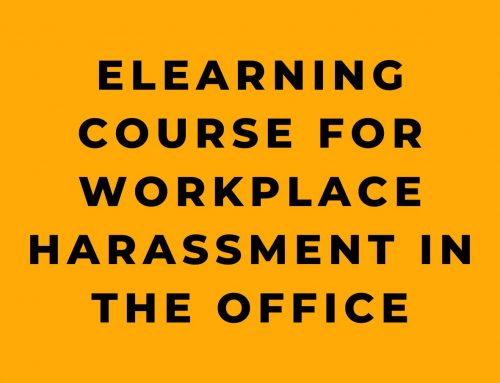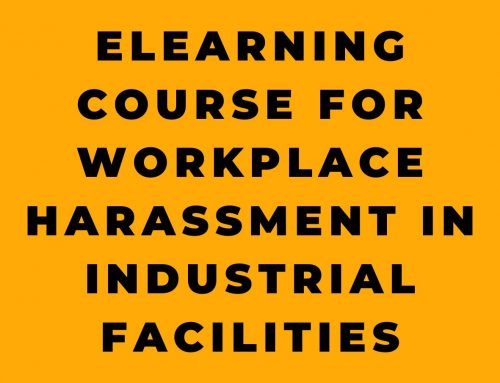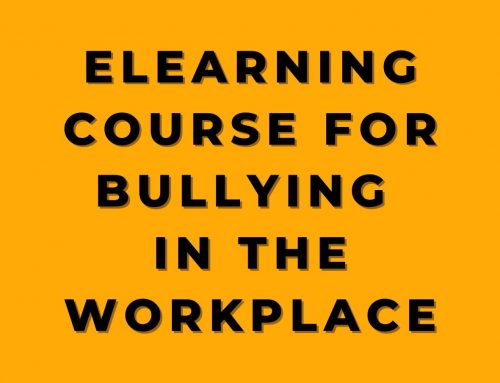Workplace harassment remains a pervasive issue that impacts millions of employees each year. From inappropriate jokes to unwanted advances, various types of unwelcome behavior can make the workplace unsafe and uncomfortable. This expansive article details how to recognize harassment, handle harassing situations properly, and cultivate a respectful organizational culture. Extracted from an online workplace training course, this comprehensive guide empowers employees to protect themselves and create positive change.
What Constitutes Workplace Harassment
- Harassment involves unwelcome conduct that creates an intimidating or offensive work environment. This can include inappropriate verbal, physical, or visual behavior.
- While some actions may seem harmless, any behavior that an employee finds disturbing or threatening qualifies as harassment. Individuals define harassment differently.
- Harassment may target race, gender, age, religion, disability status, or other protected characteristics. Discriminatory harassment and sexual harassment are illegal.
- Workplace bullying, while not illegal, also creates a hostile climate. This includes insults, exclusion, excessive criticism, or sabotaging someone’s work.
- Stalking co-workers, spying on them, or making physical threats also constitutes harassment. These actions cause fear and distress.
The Effects of Harassment on Employees and Companies
- Experiencing harassment deeply impacts victims, lowering self-esteem, increasing stress and anxiety, and causing depression or PTSD symptoms.
- Harassment poisons company culture, reducing morale, satisfaction, and productivity across the organization. It increases absenteeism and turnover.
- Left unchecked, harassment can escalate into violence. Threats or physical assault endanger employees and create severe legal liability.
- Companies suffer financially from harassment through lower output, legal/settlement fees, PR crises, and difficulty attracting talent.
Steps Employees Can Take Against Workplace Harassment
- If you experience or witness harassment, speak up right away. Silence enables further abuse. Politely confront the harasser if you feel comfortable.
- Keep detailed records of all harassment incidents, including dates, times, actions, and witnesses. This documentation strengthens complaints.
- Formally report all harassment, discrimination, stalking or threats to your supervisor or HR. Your identity will remain confidential.
- If needed, get law enforcement involved, such as for stalking or imminent physical danger. You have the right to feel safe at work.
- Acceptable solutions could include apology, anti-harassment training, schedule changes, transfers, or termination of harasser.
- Seek counseling from your employer if dealing with trauma from harassment. This can help you process and heal emotionally.
Defusing Potentially Violent Situations
- If a confrontation seems imminent, remain calm. Arguing or shouting can provoke the aggressor.
- Keep at least five feet of distance to avoid physical contact. Maintain a neutral posture without aggressive gestures.
- Suggest involving third parties like supervisors or security to mediate and resolve the conflict peacefully.
- If grabbed or cornered, loudly call for help. Co-workers can intervene or summon assistance.
- As a last resort, exit the area. Never retaliate or become violent yourself, which could lead to injuries or firing.
Fostering a Respectful, Inclusive Workplace Culture
- Encourage open communication between employees and leadership. Provide anonymous reporting channels.
- Institute zero tolerance anti-harassment policies, with proportionate consequences for violations. Enforce them consistently.
- Train all employees regularly on recognizing and preventing harassment, including bystander intervention skills.
- Promote diversity, equity and inclusion. Discrimination stems from prejudicial attitudes. Foster empathy.
- Model respectful behavior between leaders and staff. Employees emulate what they see.
- Celebrate achievements like harassment-free periods. Recognize those who promote positive culture.
Left unchecked, workplace harassment can ruin companies, end careers and destroy lives. But with proper policies, training and reporting channels in place, employees can identify inappropriate conduct early and resolve issues before they escalate. By supporting victims and disciplining offenders, companies create workplaces where every person feels welcomed, valued and empowered to perform their best. With commitment from leadership and participation at all levels, we can eliminate harassment and unlock human potential.
To further enhance the safety and dignity of your industrial facility, consider Our “Workplace Harassment in Industrial Facilities” online safety training course. This program is specifically designed to address the critical issue of workplace harassment, educating employees on identifying harassment, understanding its effects, responding appropriately, and preventing escalation into violence.
Transform your industrial facility into a respectful and dignified workspace with Our “Workplace Harassment in Industrial Facilities” online safety training course. This crucial program addresses the pervasive issue of workplace harassment, which affects tens of millions of U.S. workers annually, creating an unsafe and unproductive work environment.
A Comprehensive Approach to Combat Workplace Harassment
Workplace harassment is not just a personal issue; it’s a critical business concern with legal implications. Our course is meticulously crafted to educate employees on what harassment is, its detrimental effects, how to respond appropriately, and crucially, how to prevent it from escalating into violence.
Critical Topics Covered for a Safe and Respectful Workplace
Our course dives deep into essential areas:
- Understanding the various forms of harassment.
- Insights into discrimination, sexual harassment, and related laws.
- Effective strategies for responding to harassment.
- Techniques for preventing workplace violence.
- Guidelines for dealing with situations involving a stalker.
Micro-Learning for Enhanced Learning Experience
Acknowledging the demanding nature of industrial work, Our course adopts a Micro-Learning format. These concise 3-5 minute modules are designed for quick, efficient learning, ensuring that employees can grasp critical information without disrupting their workflow.
Training in English and Spanish for Inclusive Learning
We are committed to inclusivity in safety training, offering all course materials in both English and Spanish. This ensures that every member of your diverse workforce has equal access to this vital training.
Beyond Online Courses
To cater to different learning preferences, Our also provides DVDs and interactive CD courses. This comprehensive approach ensures a deeper understanding and application of the principles of workplace harassment prevention.
Your Partner in Creating a Harassment-Free Workplace
Opting for Our “Workplace Harassment in Industrial Facilities” course means taking a significant step toward fostering a safer, more respectful, and legally compliant work environment.
For a detailed course outline and to experience a demo of Our Online Training System, click here. Let’s work together to ensure your workplace is not just safe physically, but also a secure and respectful environment for all employees.








